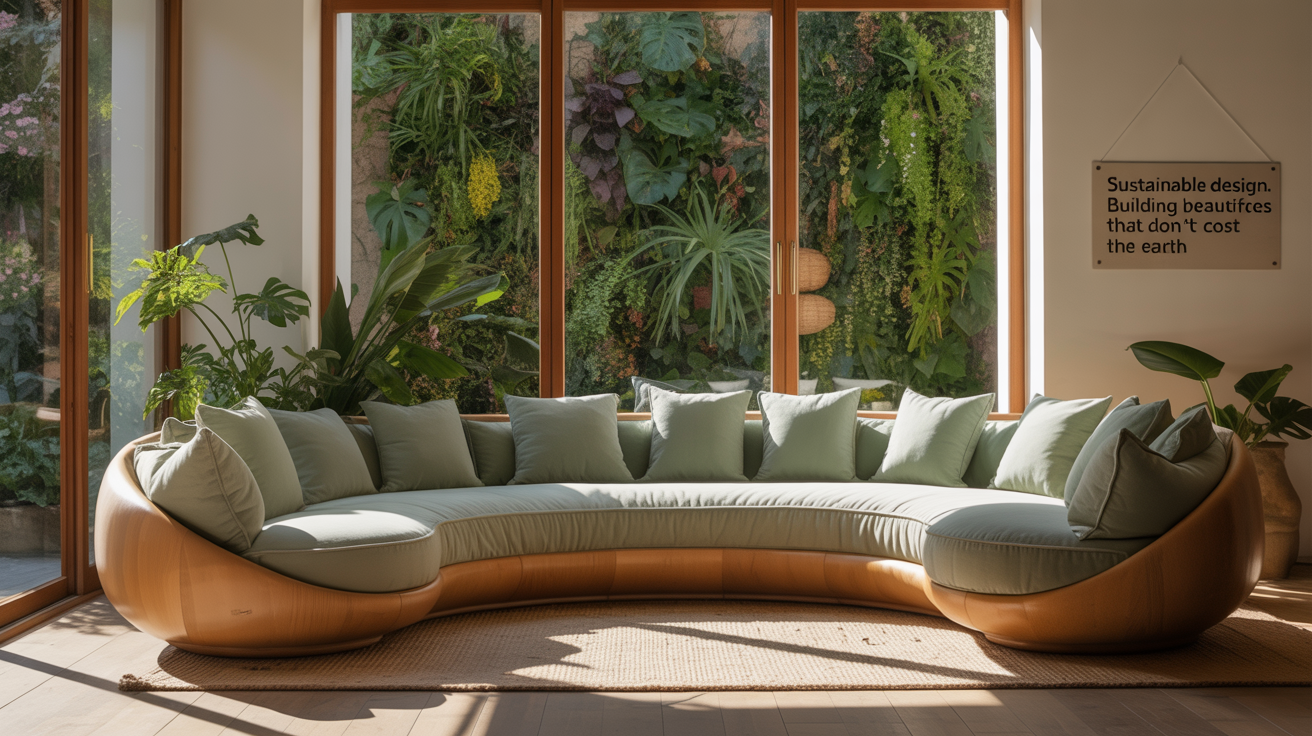
Create stunning interiors that protect your family's health and the planet's future. Sustainable design isn't just about being environmentally conscious—it's about creating healthier, more durable, and ultimately more beautiful spaces.
The conversation around sustainable design has evolved far beyond hemp curtains and recycled cardboard furniture. Today's eco-conscious homeowners want spaces that are simultaneously gorgeous, healthy, and environmentally responsible. The good news? Sustainable design has never been more beautiful, accessible, or cost-effective. From bamboo flooring that rivals hardwood to paint that actively purifies your air, green design choices can actually enhance both your home's beauty and your family's well-being while reducing your environmental footprint.
Beyond Compromise: Modern sustainable materials don't ask you to sacrifice beauty for environmental responsibility. In many cases, they offer superior performance and aesthetics.
Bamboo Flooring Revolution: Today's bamboo flooring is harder than oak, comes in dozens of colors and textures, and regenerates in 3-5 years versus 25-50 years for hardwood. Strand-woven bamboo can handle heavy traffic better than traditional hardwood while maintaining the warm, natural aesthetic that makes wood flooring timeless.
Cork's Comeback: Once relegated to bulletin boards, modern cork flooring offers natural antimicrobial properties, superior insulation, and comfort underfoot. It's harvested without harming trees and comes in patterns that rival ceramic tile or hardwood planks.
Reclaimed Wood with Character: Reclaimed wood doesn't just save trees—it offers grain patterns and character impossible to replicate in new lumber. Sourced from old barns, factories, and demolished buildings, reclaimed wood brings history and uniqueness to your space while preventing waste.
Choose Natural and Recycled Materials: Bamboo flooring, cork tiles, reclaimed wood, and recycled glass countertops offer beautiful alternatives to conventional materials while reducing environmental impact.
Invest in Quality Over Quantity: Instead of filling your space with cheap, disposable furniture, invest in fewer, higher-quality pieces that will last for years. This approach is both more sustainable and more cost-effective in the long run.
Maximize Natural Light: Design your space to take advantage of natural light, reducing the need for artificial lighting during the day. Consider skylights, larger windows, or light tubes for interior spaces.
Choose Local and Artisan-Made: Support local craftspeople and reduce transportation emissions by choosing locally made furniture and accessories. This also adds unique character to your space.
Plan for Flexibility: Design spaces that can adapt to changing needs over time, reducing the need for major renovations. Modular furniture and flexible layouts extend the life of your design.